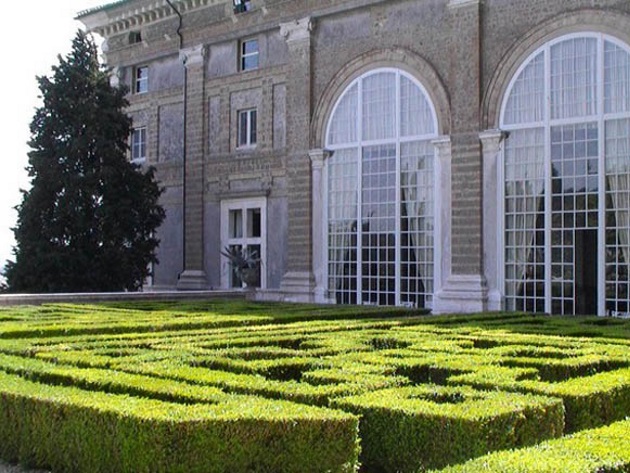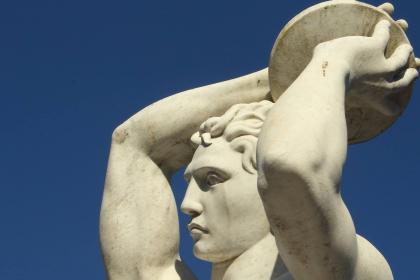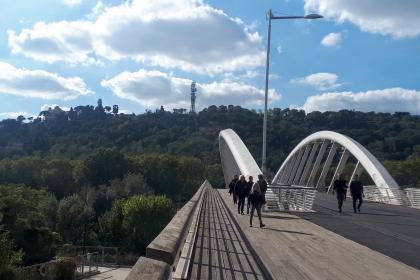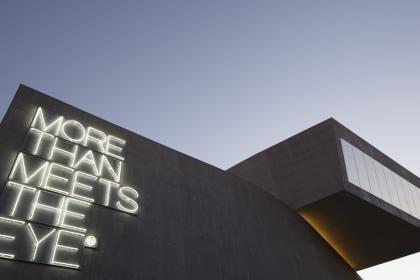
On the slopes of Monte Mario, the Renaissance villa known today as Villa Madama in honor of Margaret of Austria, daughter of Emperor Charles V and first married to Alessandro de’ Medici and then to Ottavio Farnese, and in memory of the period she spent there, intended to revive the splendor and grandeur of the ancient Roman villas, as described, for example, by Pliny: the small part of it that is preserved is in fact enough to arouse our wonder.
The overall plan was designed by Raphael, commissioned by Pope Leo X and his cousin Cardinal Giulio: the Pope had purchased the land but officially the client was Giulio, so that the villa was owned by the Medici family rather than the Holy See. A formidable group of artists participates in the work, including Antonio da Sangallo, who supervised the actual construction, Giulio Romano, who realized the decorations together with Baldassarre Peruzzi and Giovan Francesco Penni, Giovanni da Udine who made the stucco reliefs, and the sculptor Baccio Bandinelli.
Slowed down by Raphael’s death in 1520, work resumed in 1524 with the election of Giulio who became pope with the name of Clement VII, but only the northern half of the original project was built. After being devastated in 1527 during the sack of Rome, the villa was partially restored and integrated, but never completed.
Passed by the Medici family to the Farnese family and then to the Bourbons, the villa and the garden experienced a long period of abandonment. In 1913, the villa was purchased by the French engineer Maurice Bergès, who commissioned its restoration to Marcello Piacentini. In 1925 the property passed to the American heiress Dorothy Caldwell-Taylor, Countess of Fasso, who completed the restoration project. Piacentini was responsible for the construction of the second floor and the travertine spiral staircase in the Renaissance style that leads to the main floor.
Owned by the Ministry of Foreign Affairs since 1941, Villa Madama is now the representative office of the Ministry and the Prime Minister. The villa retains the loggia designed by Raphael inspired by the architecture of the Roman baths, decorated with stucco relief by Giovanni da Udine and paintings by Giulio Romano. The grotesques that the two artists used after rediscovering them in the ruins of the Domus Aurea are visible everywhere. In addition to the loggia, the relevant artistic element is the salone painted by Giulio Romano, with its magnificent vaulted ceiling. In front of the loggia, the Italian garden still preserves the Elephant Fountain, created by Giovanni da Udine, which recalls the Indian elephant Annone, brought to Rome by the Portuguese ambassador for the consecration of Leo X, in 1514; on the sides of the entrance that leads from the terrace to the rustic garden there are two stucco giants made by Baccio Bandinelli.
The Foro Italico Complex

 Condividi
Condividi
The Music Bridge - Armando Trovajoli

 Condividi
Condividi
MAXXI - Museo Nazionale delle Arti del XXI secolo

 Condividi
Condividi
Information
Cosed to the public
 Condividi
Condividi
Location
To find out about all accessibility services, visit the Rome accessible section.











































